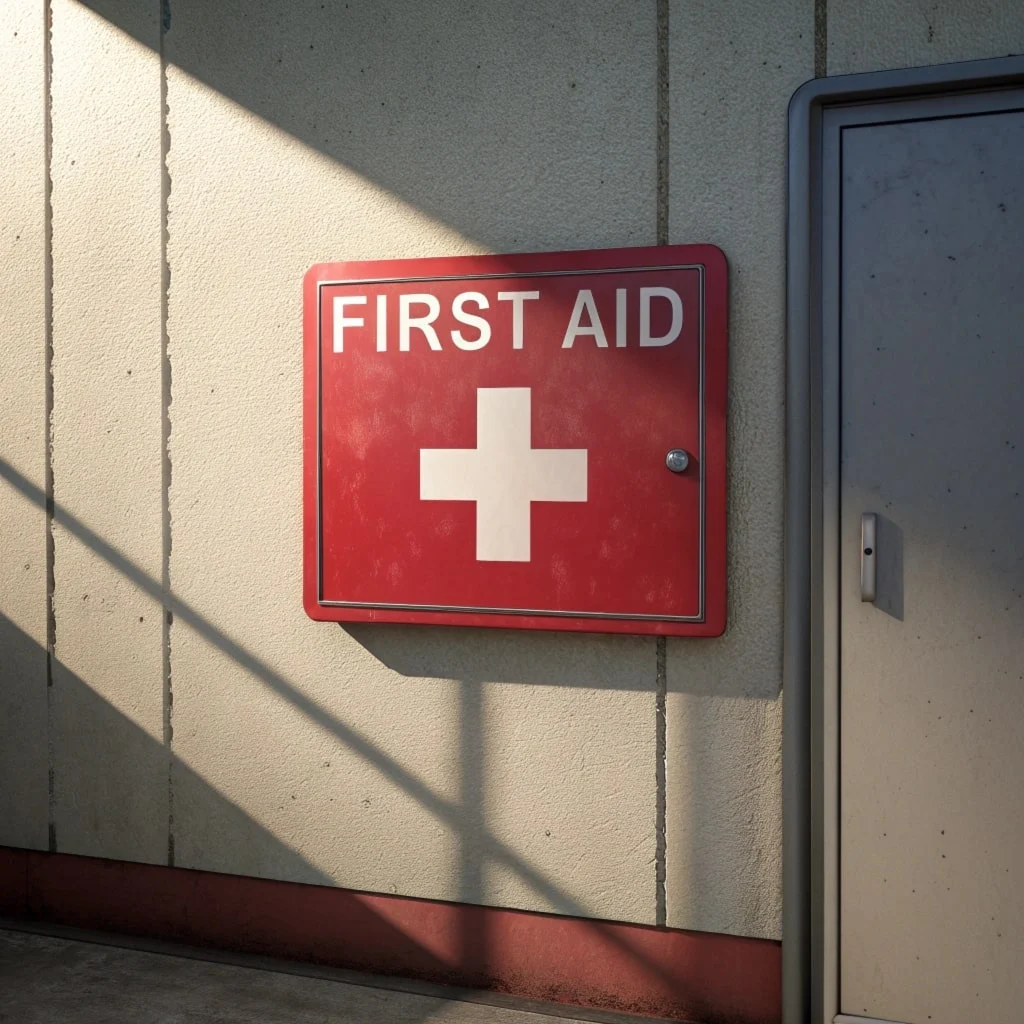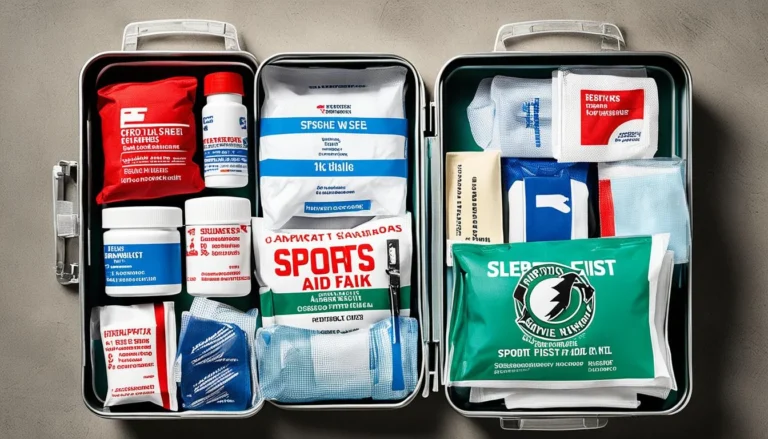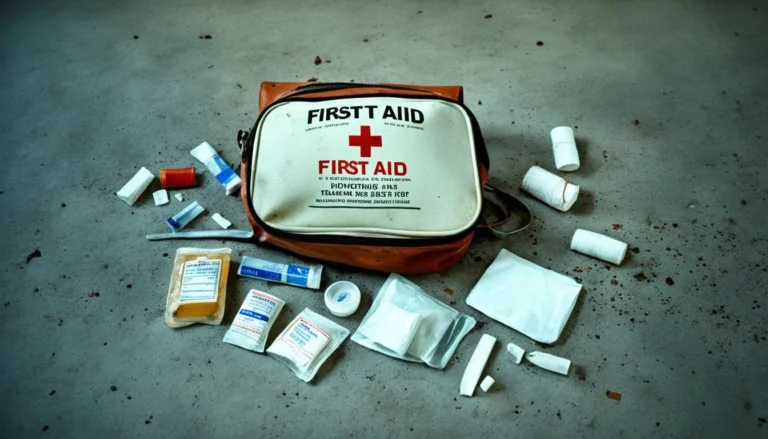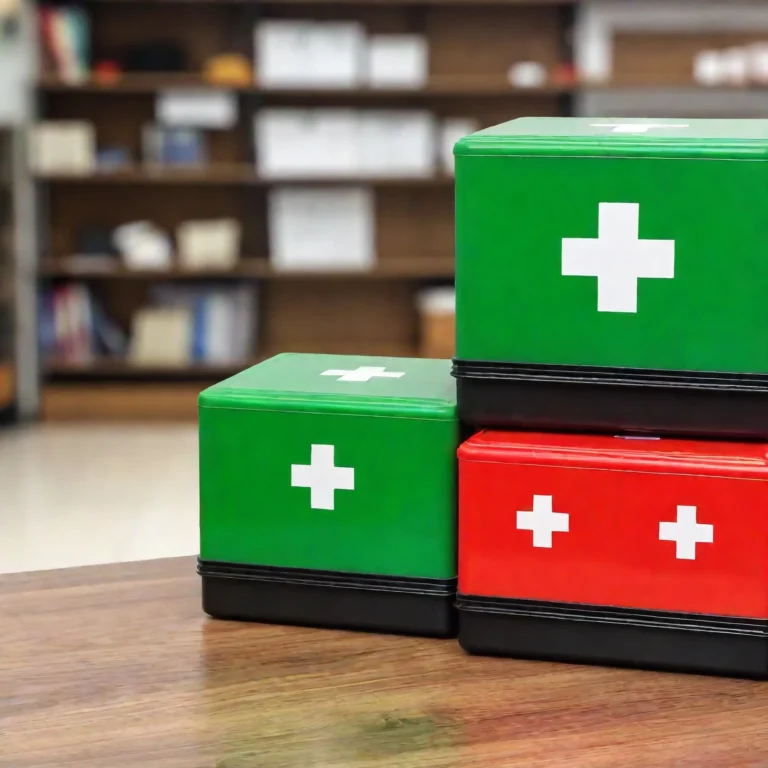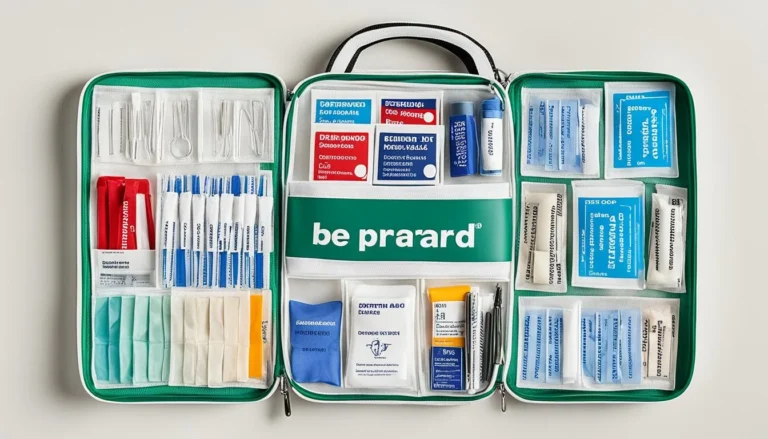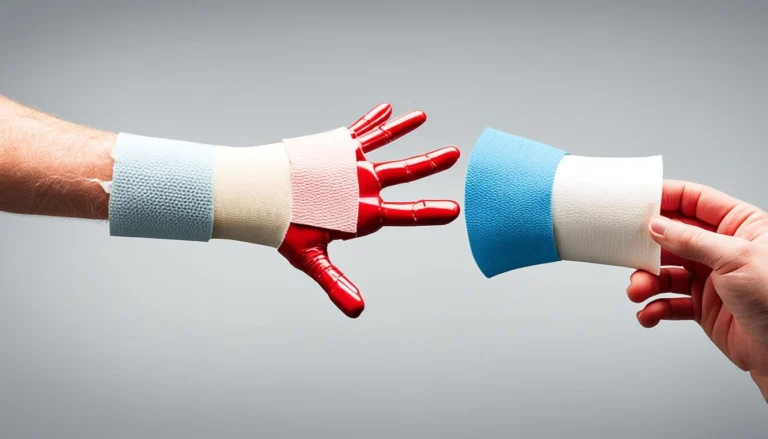Which Colour Sign Marks the First Aid Equipment Location?
Identifying the location of first aid equipment is essential for workplace safety, ensuring rapid response during medical emergencies. Proper signage, including warning signs and mandatory signs, and colour coding play a crucial role in guiding individuals to these vital resources and enhancing fire safety.
The colour green, often used in conjunction with white, is specifically designated to indicate the presence of first aid equipment and emergency escape routes, ensuring visibility and quick access as part of a comprehensive safety strategy.
Green and white signs are widely recognised as markers for first aid kits and stations, symbolising safety and health. These colours help reduce panic and direct individuals to essential medical supplies, promoting a well-prepared and compliant workplace environment.
Understanding the significance of first aid sign colours, including the role of photoluminescent signs for visibility during power outages, and their proper placement can significantly enhance emergency preparedness, ensuring that employees can provide prompt and effective care when needed.
Employers must ensure that safety signs, including first aid signs, are visible and comply with health and safety regulations.
Why is it Important to Know the Location of First Aid Equipment?
Knowing the location of first aid equipment is crucial for workplace safety, ensuring a quick response to medical emergencies.
Immediate access to first aid supplies can reduce the severity of injuries and save lives.
Employers must provide clear signage for first aid locations to comply with health and safety regulations, including the use of COSHH symbols where necessary.
What are the Different Colours Used to Indicate First Aid Equipment?
First aid equipment colours include green and white. These colours are part of the Health and Safety (Safety Signs and Signals) Regulations 1996, which ensure consistent communication of safety information across the European Union.
Green indicates a safe condition and white is used for the background to ensure visibility, meeting the requirements set by the Health and Safety Executive.
First aid signs use these colours to ensure easily identifiable first aid locations.
Green
The colour green is associated with first aid kits and signifies safety and health in emergencies.
Green indicates the availability of medical assistance and directs to first aid equipment.
Green provides a calming effect, reducing panic during emergencies.
White
White is used to mark first aid stations, indicating where individuals can receive medical attention or assistance.
White enhances visibility and ensures critical information is accessible during emergencies. The colour signifies cleanliness and sterility, which are essential in health-related contexts.
White is used in hospitals, workplaces, and public areas to promote health and safety.
Blue
Blue is used for eye wash stations, indicating their location for immediate eye care during chemical exposure or injury.
Blue signage helps workers quickly find safety equipment, ensuring compliance with HSE standards.
Blue symbols in workplaces signify essential safety measures.
Red
The colour red indicates fire-related equipment like fire extinguishers and serves as a warning for potential hazards.
Red signage in safety environments signals immediate danger and enhances visibility during emergencies.
Using red consistently aids in quick identification and swift response during crises.
Yellow
Yellow signifies caution regarding biohazardous materials.
Yellow serves as a universal indicator for alertness, ensuring individuals remain aware of potential dangers in environments handling toxic substances.
Employers must place yellow signs in accordance with health and safety regulations to minimise risks.
Yellow enhances visibility of warnings, facilitates compliance with regulations, and encourages proactive safety measures.
What Do These Colours Mean?
Health and safety sign colours convey specific meanings. Red indicates prohibition or fire safety signs, blue signifies mandatory actions, yellow warns of caution or potential hazards, and green marks safety information or first aid locations. These colours are an integral part of a workplace’s safety strategy.
Green – First Aid Kit
Green indicates the presence of a first aid kit. First aid kits provide immediate care during emergencies.
First aid kits typically contain:
- adhesive plasters
- gauze pads
- antiseptic wipes
- scissors
- tweezers
- burn creams
- medical tape
First aid kits are essential in workplaces to comply with health and safety regulations, including the Health and Safety (Safety Signs and Signals) Regulations 1996.
White – First Aid Station
A white sign indicates the location of a first aid station, where trained staff provide assistance during medical emergencies.
White signs mark essential safety hubs for workplace compliance and emergency preparedness.
Blue – Eye Wash Station
Blue safety signs indicate the location of eye wash stations, essential for workplaces handling hazardous substances.
Eye wash stations provide immediate decontamination for eye injuries and are usually located within a 10-second walking distance in well-lit, visible areas.
Regular inspection and maintenance ensure eye wash stations function properly, complying with regulations such as those from the HSE.
Red – Fire Extinguisher
Red indicates the location of fire extinguishers, essential for immediate fire response in places of work.
Fire extinguishers suppress fires quickly and are classified by types, such as Class A for ordinary combustibles and Class B for flammable liquids.
Workplace regulations require clear signage for easy identification of fire extinguishers.
Yellow – Biohazardous Material
Yellow safety signs, including those seen on a construction site or warehouse, indicate the presence of biohazardous materials.
These signs require individuals to take necessary precautions to avoid exposure to harmful substances.
Protocols include using personal protective equipment (PPE), proper disposal methods, and following emergency response plans.
Compliance with guidelines from the HSE and the CDC ensures workplace safety and legal protection.
Where Should First Aid Equipment Be Located?
First aid equipment should be located in easily accessible areas where employees can quickly reach it during emergencies.
Common placements include near workstations, break rooms, and entrances to ensure visibility and prompt access.
Signage should accompany first aid kits to clearly indicate their location, complying with health and safety regulations.
Workplace
First aid equipment in workplaces must be accessible and placed in visible locations known to all employees.
Workplaces must comply with legal requirements for first aid provisions, which vary by sector and environment.
- Inspect and maintain first aid supplies regularly.
- Provide employee training on the use of first aid equipment and emergency response.
Ensuring compliance enhances workplace safety and preparedness.
Schools
Schools must ensure first aid equipment is accessible across the premises to guarantee student and staff safety.
First aid equipment includes first aid kits, defibrillators, fire extinguishers, and emergency blankets, which should be strategically placed in communal areas and classrooms to meet safety compliance.
Regular safety drills and compliance checks in schools help maintain preparedness for emergencies, aligning with regulations on behavioural safety.
Public Places
In public places like parks, shopping centres, and stadiums, first aid equipment is essential for public safety.
First aid equipment should be readily accessible and clearly indicated through signage, trail markers, and instructional displays.
Trained personnel enhance the effectiveness of first aid equipment, ensuring timely assistance.
Regular staff and volunteer training in first aid practices is crucial for preparedness.
Compliance with local regulations ensures all public spaces meet necessary safety standards.
What Should You Do If You Cannot Find First Aid Equipment?
If you cannot find first aid equipment during an emergency, assess the situation and contact emergency services for professional help.
While waiting for assistance, use clean cloths as compresses to control bleeding and water and soap to clean wounds.
Seek nearby trained personnel for help if available. Keeping the injured person comfortable is important.
Conclusion
First aid equipment is crucial for workplace safety. Proper placement, effective signage, and colour coding enhance emergency responses.
Knowing the location and use of first aid kits, along with regular training, give the power tos employees to act swiftly in emergencies.
Routine checks of first aid supplies ensure readiness and compliance with safety regulations.
Frequently Asked Questions
What colour sign indicates the location of the first aid equipment?
The colour sign that indicates the location of the first aid equipment is usually green and white. This colour combination is commonly used for first aid signs and is easily recognisable by most people. In addition to first aid signs, there are other health and safety signs like COSHH symbols and prohibition signs that are important to understand in workplaces.
Why is it important to know the colour sign for first aid equipment?
It is important to know the colour sign for first aid equipment because it helps people locate the equipment quickly in case of an emergency. It also ensures that the equipment is easily accessible and visible for anyone who may need it. Understanding these signs is part of complying with the Health and Safety (Safety Signs and Signals) Regulations 1996, which are crucial for maintaining safety standards.
Are there any variations in the colour sign for first aid equipment?
Yes, there can be some variations in the colour sign for first aid equipment depending on the country or region. Some places, especially within the European Union, may use red and white instead of green and white, but the colour combination is always easily distinguishable from other signs.
Where can I find the colour sign for first aid equipment?
The colour sign for first aid equipment is usually placed near or above the location of the equipment. It can be found in various public places such as schools, offices, and public facilities. You can also ask a staff member or look for a first aid kit symbol on the sign. Additionally, emergency escape signs like fire exit signs are often located near first aid equipment to guide people during emergencies.
Do all first aid equipment have a colour sign indicating their location?
Yes, all first aid equipment should have a colour sign indicating their location. This is to ensure that they are easily identifiable and accessible in case of an emergency. If you cannot find the sign, you should ask a staff member for assistance. During the COVID-19 pandemic, additional health and safety measures, including clear signage, have become even more crucial.
Can I create my own colour sign for first aid equipment?
It is not recommended to create your own colour sign for first aid equipment as it may cause confusion in case of an emergency. It is best to follow the standard colour sign used in your area to ensure that the equipment is easily recognisable by everyone. This includes adhering to the guidelines set by the Health and Safety Executive and understanding the role of PPE in safety protocols.

